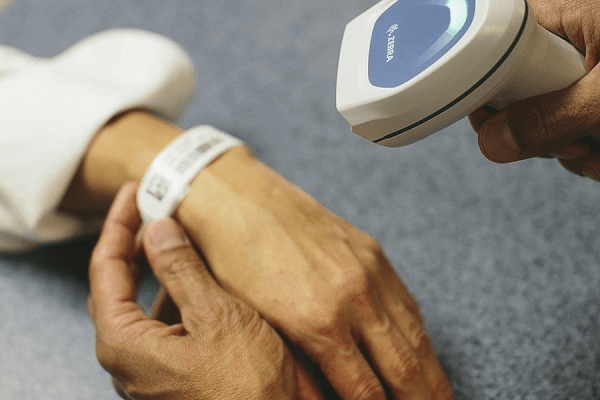Bar Coded Medication Administration (BCMA)The Barcoded Medication Administration (BCMA) gadget is a complicated technology supposed to enhance patient protection and drastically reduce drug mistakes in healthcare environments, especially in hospitals. The predominant purpose of BCMA is to ensure that patients receive the right tablets in the ideal quantity and timing, reducing bad drug reactions and increasing general patient consequences. 
Components of BCMABarcode Printer: Barcode printers are used by hospitals to produce precise barcodes for every medicine in their inventory. These barcodes are used to identify certain tablets. Barcode Scanner: The barcode scanner is a portable device used by healthcare people, including nurses or clinicians, to scan barcodes on exceptional BCMA system components consisting of affected persons' wristbands, clinician identification badges, and prescription labels. Wireless Mobile Computer: Clinicians utilize a mobile computer, which is mostly a portable device with Wi-Fi capability, to speak with the BCMA gadget at the point of care. This generation permits them to test barcodes and instantly obtain patient and drug records. Server and software for computers: The BCMA machine is supported by a computer server that hosts the BCMA software program. This server is in charge of the patient data, medication orders, and barcode records database. The BCMA software program promotes conversation among device components. Working of BCMAWhen a patient is prescribed medication, a chemist enters the prescription into the hospital's pharmacy computer system. This data comprises the patient's name, recommended drug, dose, and administration schedule. Using a barcode printer, the chemist creates a unique barcode label for the given drug. This barcode serves as the medication's unique identifier. The prescription medication is dispensed by the chemist to the patient's floor, where the patient is placed. The unique barcode is labelled on each pharmaceutical box or container. A clinician uses a portable device (mobile PC) equipped with a barcode scanner to dispense medicine. The doctor scans:
The scanned information is cross-referenced with the electronic medicine order in the BCMA system. If the BCMA system identifies a disparity between the prescribed prescription and the scanned information, a visual warning or alert is generated to tell the doctor. This requires additional verification and prevents inappropriate drugs from being administered. The barcode on the patient's wristband provides critical patient information such as allergies, medical history, and current prescriptions. This guarantees that professionals have immediate access to critical patient data. The deployment of BCMA has proven tremendous promise in decreasing medication mistakes; by addressing the Five Rights, the system helps reduce instances of providing wrong drugs, dosages, or routes to patients. The Five Barcode Medication Administration Rights:
BCMA is critical in maintaining the Five Rights of Medication Administration, hence improving patient safety and overall effectiveness in healthcare settings. The successful deployment of BCMA, particularly in big healthcare systems such as the Department of Veterans Affairs, demonstrates its ability to minimize medication mistakes and drastically enhance patient care quality. What kind of mistakes does the Barcode Medication Administration avoid?Every year, around 7,000 people die as a result of avoidable human mistakes. While the technology is far from perfect, studies suggest that using barcode technology can minimize drug mistakes by 65 to 86%. The following sorts of mistakes have been reduced: Giving medicine to the incorrect patient: When employing a BCMA system, it is critical to follow hospital policy. Nurses frequently devise workarounds to make their jobs more bearable. For instance, placing a patient's ID wristband at the foot of the bed or near the entrance. This can be dangerous if a patient is transported without the knowledge of a medical practitioner. Using one drug instead of another: Everyone in the medical sector is aware that there are hundreds of medications on the market. They are also aware that many of them appear and sound the same yet cure entirely distinct ailments. A patient is protected against obtaining the incorrect medication if the drug is scanned before administration. Incorrect drug administration: It is not always evident how a drug should be taken. The procedure and dose information saved in the barcode ensures that a nurse is constantly aware. |
 For Videos Join Our Youtube Channel: Join Now
For Videos Join Our Youtube Channel: Join Now
Feedback
- Send your Feedback to [email protected]
Help Others, Please Share










